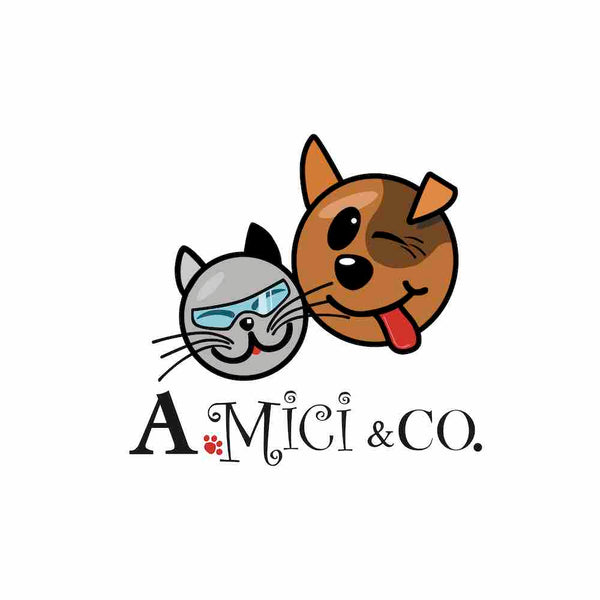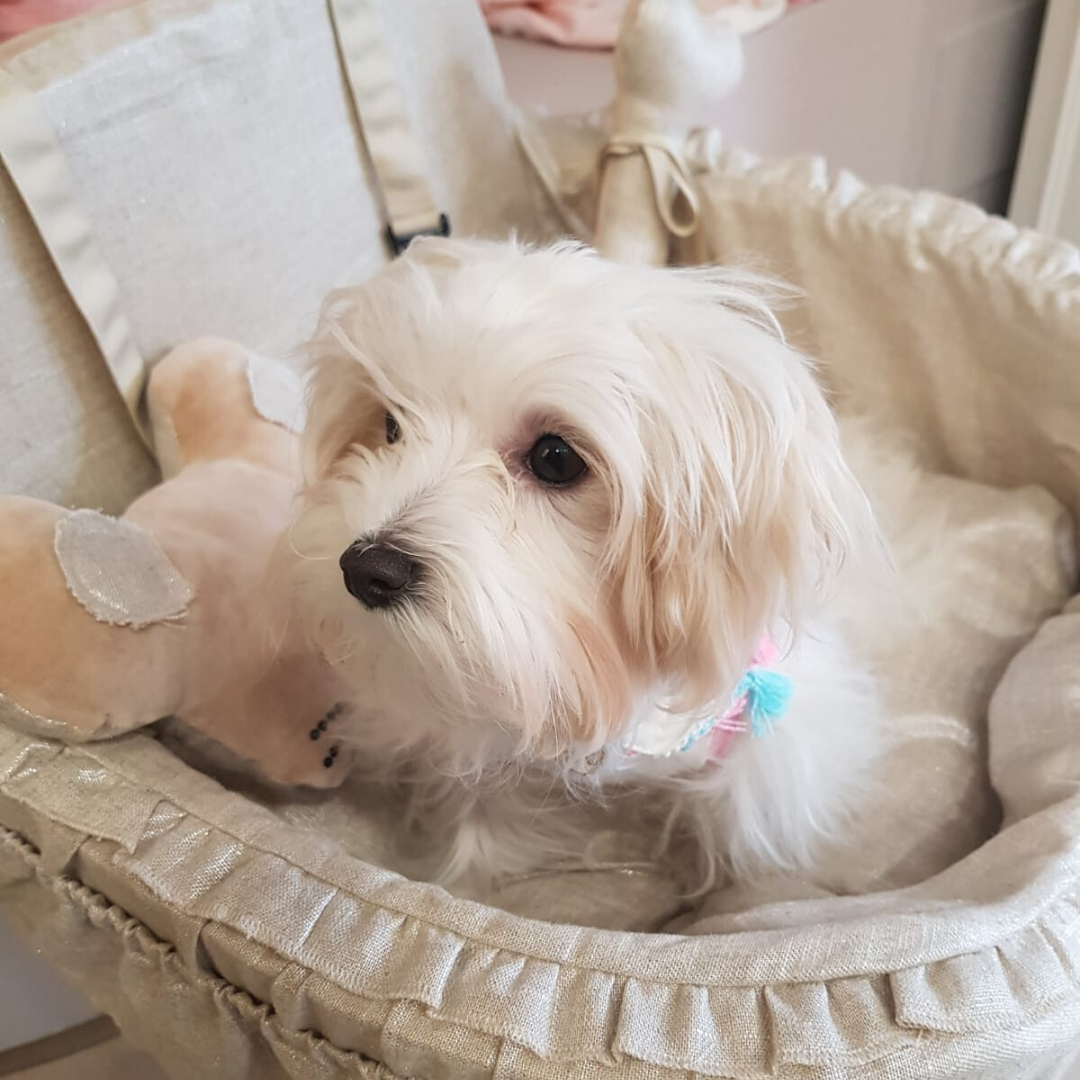The Maltese: one of the oldest dog breeds!
One of the characteristics that distinguish this small companion dog from others is the fact that, just like a large dog, it needs to take long walks in the fresh air and also needs an owner who devotes a lot of time and attention to it.
Maltese fascinate many with their qualities as perfect intelligent and lively companion dogs. In fact, they are great companions for those who like to have their four-legged friend near them at all times and for those who also like to take care of their furry and cuddle them. It is a dog that wants to be pampered, go for walks and live in warm environments.
Read on to find out everything you need to know about the Maltese!
Origin of the Maltese breed
The origins of the Maltese are not well known, but it is certain to be European and to be found in the Mediterranean Sea basin during the time of Ancient Rome.
The name Maltese is most likely derived from an ancient Sicilian city called "Melita."
One thing for sure, this dog is often depicted (in literature and paintings) in the homes of Roman nobles, Maltese were adored by women for their great intelligence and beauty!
Physical characteristics and appearance of the Maltese
The Maltese is a small dog with an elongated trunk its body can be described as narrow and long. It has a triangular head and drooping ears.
It is generally between 21 and 25 cm long and weighs between 3 to 4 kg.
He has eyes with a lively and alert expression that are larger than normal.
What characterizes him most is his very long fur all over his body, which is very dense, glossy and shiny, pure white or ivory.
The Maltese is a very elegant dog with a proud bearing of the head!
Character and Living Conditions of the Maltese
The Maltese is a lively, affectionate, intelligent, very docile and understanding dog. It is also very loyal and very attached to its owner, whom it rarely loses sight of. The Maltese is a wonderful companion, full of joy and cheerfulness, able to learn everything quickly and with a determined and courageous character!
It is also a very sociable dog, as long as it is used to being with different people, places and situations.
Be careful, however, because the Maltese can also be lazy and indolent and therefore needs to be properly stimulated and corrected so that it does not sit idle all day.
He is a true companion dog, but because he is very brave and barks loudly at intruders, he can also be used as a guard dog for your apartment!
Care of the Maltese
For the Maltese to have the well-groomed appearance for which it is so prized, it needs an owner who is constantly dedicated to maintaining the coat of this elegant little dog.
After each walk, you should check your dog's coat for leaves or twigs that may have become tangled.
Long, silky hairs need to be brushed daily, otherwise they tend to tangle. You need to insist on the areas that tend to tangle: the underbelly, front armpits, which are prone to rubbing from movement or some scratching.
It is recommended to schedule a bath at least twice a month: get your puppy used to this ritual from the beginning and use a mild shampoo for long-haired or white dogs. Brush your furry friend well before bathing. Use warm water, massage the shampoo in well and rinse the coat well. Use a conditioner to care for his coat during the second wash. Finally, gently wring the water out of the coat and dry your little friend immediately, because a wet Maltese can get cold quickly.
The Maltese also suffers a lot from conjunctivitis, which is caused by the fur coming into contact with the eyes when it is dirty, you may want to keep the fur shorter in your pooch's eye area.
Nutrition and main health problems of the Maltese
The Maltese is a very robust dog indeed despite its fragile and delicate appearance.
The most common diseases of the Maltese dog include: otitis, conjunctivitis and tartar:
Conjunctivitis is often due to dirty hair coming into contact with the eyes and causing infection. We recommend keeping the hair shorter near this area and cleaning regularly and gently with a cotton and boric water.
Another area to check is the ears, which should be cleaned periodically to prevent ear infections.
Also watch out for plaque buildup on the gums that cause inflammation and infection. One must remember to brush the teeth at least once a day also because canned food is more conducive to tartar formation than dry food.
This breed does not have a particular tendency to be overweight, but it can gain weight quickly if it leads a sedentary lifestyle and improper diet.
In the specific case of the Maltese, that is, a small pet dog that tends to be lazy, the most appropriate diet consists of two meals, never given in a single ration.
Of course, the diet may vary depending on the dog's sex, age and lifestyle. To keep him in excellent physical shape, you will need to limit rewards and avoid giving him food from the table.
Accessories for your Maltese
Before you welcome your new four-legged friend into your home, you can enjoy the wait by choosing the appropriate basic equipment. A Maltese needs a comfortable place to sleep that will also serve as a safe haven when he needs to be alone-there are plenty of wonderful dog beds and blankets to choose from.
A collar, harness and leash are essential accessories before you welcome your dog home as well as the essentials: bowls of food and water.
You should also think about how you want to transport your dog in the car or on your walks-there are many options, from different types of carrying bags made of different materials for dogs.
For frequent trips, a car seat, car blanket can also be very useful.
Your little white dog also needs grooming accessories: a soft brush, a pair of specialized dog scissors.
If you are adopting a puppy or young dog, you will need a puppy shampoo at first, then you can switch to shampoos for long-haired or white dogs.
It is always helpful to have an ear cleaner on hand. It is also good to have a specific cleaner for the eyes, as Maltese tend to have problems with their tear ducts.
The ideal owner for the Maltese
First, those interested in adopting a Maltese should find pleasure in petting, brushing, and taking a good walk with a dog, as these are essential daily activities with this breed.
These affectionate four-legged friends do not like to be left alone for long periods of time; therefore, they need people to care for them generously and constantly.
They are suitable for older people who are often in contact with nature, for example, but also for professionals who may bring their furry friend to work. They become very attached to their human and, given their size, are also excellent companions. With enough activity and movement, the Maltese also adapts well to a city apartment. Although they like to play, they don't need much sporting activity.
Originally, this adorable little dog was mainly used to chase mice hiding on merchant ships and in cargo warehouses. Today, it is considered the ultimate companion dog because of its small size and temperament, making it perfectly suited for family life.
The Maltese is a sturdy dog, although it looks a bit fragile and delicate. Although the Maltese loves to be a "lap dog," this little four-legged friend is also a little adventurer who loves to go out every day to explore and sniff by instinct.

